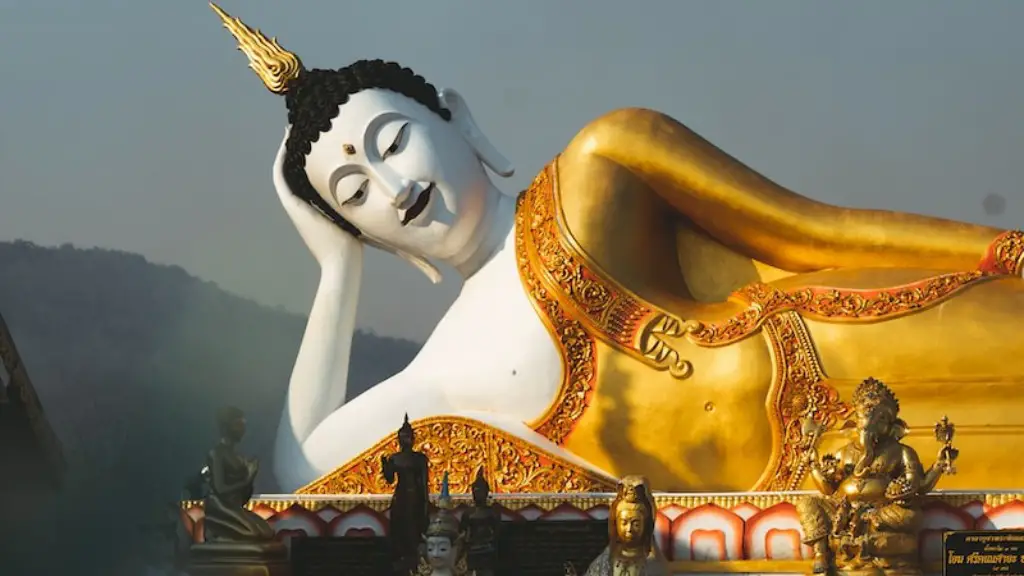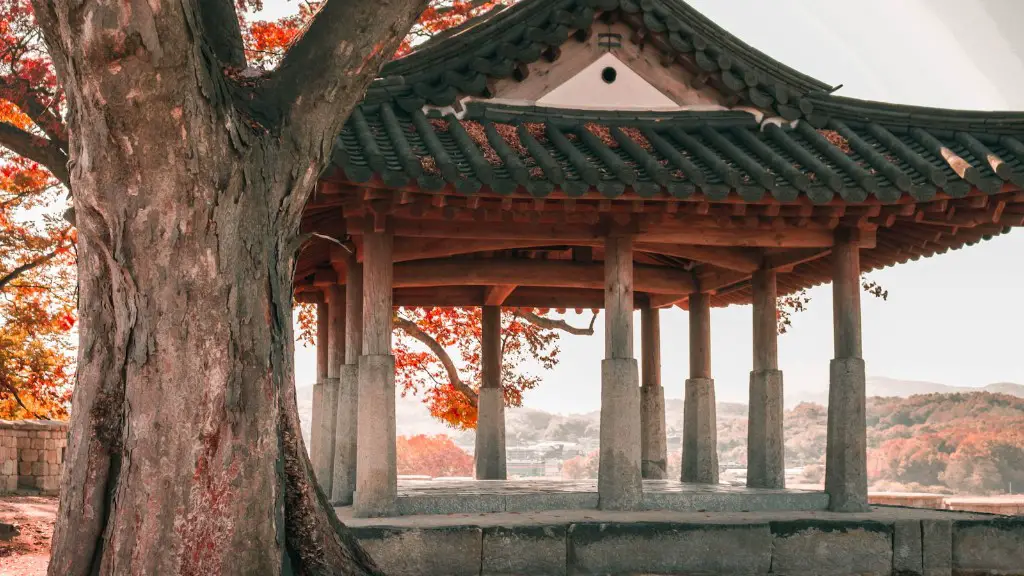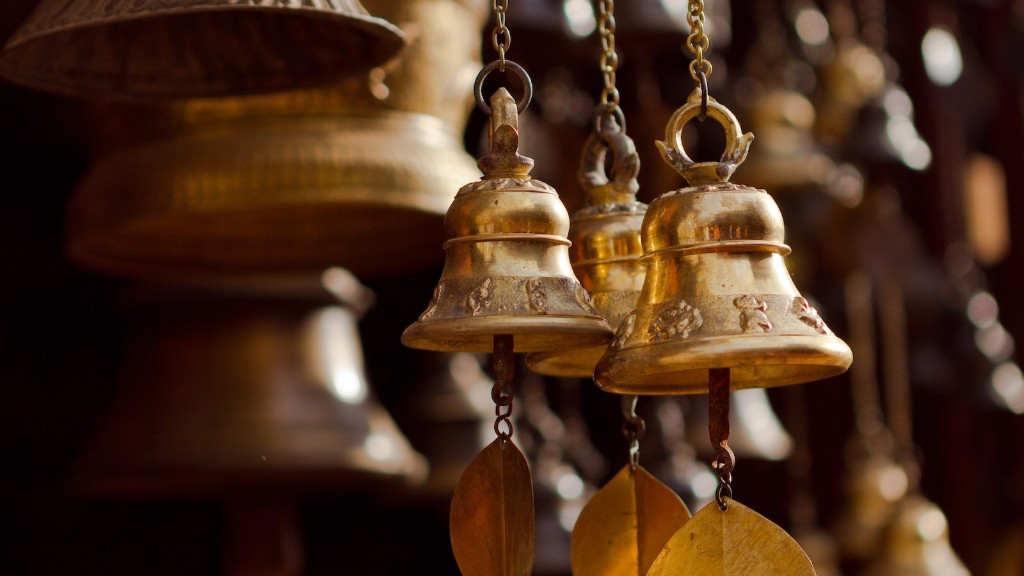Mahayana Buddhism is a branch of Buddhism that emphasizes the Bodhisattva way of life, which is the path of becoming a Buddha to help all sentient beings achieve nirvana. Mahayana Buddhists often practice the six perfections, which are generosity, morality, patience, energy, meditation, and wisdom.
Mahayana buddhists believe in the bodhisattva ideal, whereby one strives for buddhahood not just for oneself but for the sake of all beings. They also tend to emphasize emptiness (sunyata), the notion that reality is ultimately without identifiable substance or character.
What do Mahayana Buddhists believe?
The Mahayana Buddhist tradition extends the doctrine of Dependent Origination with the concept of emptiness (śūnyatā). This concept applies the doctrine of the absence of self (anātman) to all elements of existence. Consequently, nothing can be said to exist or not exist.
Buddhism, like most Indian systems of thought, sees the world as a realm of transmigration, or reincarnation (samsara), from which one may escape by attaining nirvana. In the Mahayana tradition, the emphasis is less on nirvana and more on knowledge or wisdom, the mastery of which constitutes awakening.
What is unique about Mahayana Buddhism
Mahayana Buddhism is a branch of Buddhism that emphasizes the bodhisattva path, the path of the Buddha-to-be, as the ideal. The bodhisattva is one who is able to reach nirvana but delays doing so out of compassion for all sentient beings. Mahayana Buddhists aspire to not only liberate themselves from suffering but also to lead all other people toward liberation and enlightenment.
The major characteristics of Mahayana Buddhism include the Lotus Sutra, the Prajña-paramitā sutras, and the Pure Land Sutras. The Lotus Sutra is one of the most popular Buddhist sutras throughout East Asia. The Prajña-paramitā sutras emphasize the concept of emptiness, while the Pure Land Sutras focus on Amitabha Buddha’s vows.
What are the core teachings of Mahayana?
The Mahayana stresses the importance of postponing one’s own liberation in order to help and guide all sentient beings to the state of Nirvana. A Bodhisattva of high level is said to possess a mind of great compassion and wisdom according to Mahayana teachings.
There is a key difference between Theravada and Mahayana Buddhists when it comes to their goals. Whereas Theravada Buddhists strive to become Arhats and gain freedom from the cycle of samsara, Mahayana Buddhists may choose to stay in the cycle of samsara out of compassion for others.
This difference stems from a fundamental difference in their understanding of the nature of reality. For Theravada Buddhists, reality is ultimately individual and each person is responsible for their own liberation. In contrast, Mahayana Buddhists see reality as interconnected and interdependent. This means that our liberation is not just about ourselves, but also about others.
Because of this, Mahayana Buddhists often focus on cultivating compassion as a key part of their practice. They see that by staying in the cycle of samsara and helping others, they can help create a more compassionate world for all.
What is the most important virtue of Mahayana Buddhism?
The virtue of compassion is emphasised in all schools of Buddhism, but is particularly important in Mahāyāna traditions. Compassion is generally understood as the deep care and concern for the suffering of others.
Mahayana Buddhism is different from the older form of Buddhism in two distinct ways. Firstly, the statues of Buddha began to be made in new form and secondly the idea of Bodhisattvas emerged who had attained enlightenment and helped others to attain the same.
How is Mahayana Buddhism different
There is a key difference between Theravada and Mahayana Buddhists in terms of their goals. Whereas Theravada Buddhists strive to become Arhats and gain freedom from the cycle of samsara, Mahayana Buddhists may choose to stay in the cycle of samsara out of compassion for others. This difference in goals stems from a difference in understanding of the nature of reality. Theravada Buddhists see reality as ultimately divided into separate individuals, each of whom is striving for their own liberation. In contrast, Mahayana Buddhists see reality as fundamentally interconnected, and so they may choose to stay in samsara in order to help others achieve liberation.
The two main schools of Buddhism are Theravada and Mahayana. At the core ofTheravada Buddhism is the notion of breaking the cycle of Samsara and escaping reincarnation. In contrast, Mahayana Buddhism teaches that enlightenment can be achieved through the Buddha’s teachings, but that compassion for others motivates them to stay in Samsara and reincarnate.
How are Christianity and Mahayana Buddhism different?
The two main branches of Buddhism are Mahayana and Theravada. Mahayana Buddhists make up the majority of Buddhists worldwide and they practice universal compassion and love toward all sentient beings. Christians, on the other hand, cultivate an individual relationship with God. Although both religions have different approaches to others, they both promote altruism and kindness.
Mahayana Buddhism was different from the older form of Buddhism in two distinct ways. Firstly, the statues of Buddha began to be made in a new form, and secondly, the idea of Bodhisattvas emerged who had attained enlightenment and helped others to attain the same.
Is Mahayana Buddhism strict
Mahayana Buddhism is more flexible than Theravada Buddhism, allowing for different interpretations of the tenets. However, followers of Mahayana Buddhism often have a very structured and regimented routine, as is the case with Zen.
In Mahayana tradition, worshipers may sit on the floor barefoot, facing an image of Buddha and chanting. They may listen to monks chanting from religious texts, perhaps accompanied by instruments, and take part in prayers.
Can Mahayana Buddhists drink?
Mixed views exist on the consumption of alcohol within Buddhist traditions. While the majority of Buddhist traditions, including those belonging to the Mahāyāna, generally advise against consuming intoxicants, alcohol can be an essential component of tantric rituals. Some tantric texts even recommend consuming alcohol as a means of arousing certain spiritual powers. However, it is important to note that these texts also caution against becoming intoxicated, as this could lead to carelessness and loss of control. Ultimately, the decision whether or not to consume alcohol must be made on a case-by-case basis, taking into account the individual’s spiritual goals and the advice of a qualified teacher.
Mahayana Buddhism is a philosophical movement that believes in the possibility of universal salvation. It offers assistance to practitioners in the form of compassionate beings called bodhisattvas. The goal is to make it possible for all sentient beings to achieve buddhahood (becoming a Buddha).
What do Buddhists think of Jesus
There are some high level Buddhists who have drawn analogies between Jesus and Buddhism. In 2001, the Dalai Lama stated that “Jesus Christ also lived previous lives”, and added that “So, you see, he reached a high state, either as a Bodhisattva, or an enlightened person, through Buddhist practice or something like that”. Thich
There is no concept of punishment or reward in Buddhism, and there is no divine being who decides who goes to hell or heaven. There is merely the illusory results of our thought, words and deeds, which we call karma.
Conclusion
Mahayana Buddhists believe in the principles of the Four Noble Truths and the Eightfold Path. They also believe in the doctrine of karma, the law of cause and effect.
Mahayana Buddhists believe that everyone has the potential to become a Buddha and that Mahayana teachings will lead to the greatest good for the greatest number of beings. They also teach that the Buddha is still teaching in the form of bodhisattvas and that Buddhism is not just a religion but a way of life.




